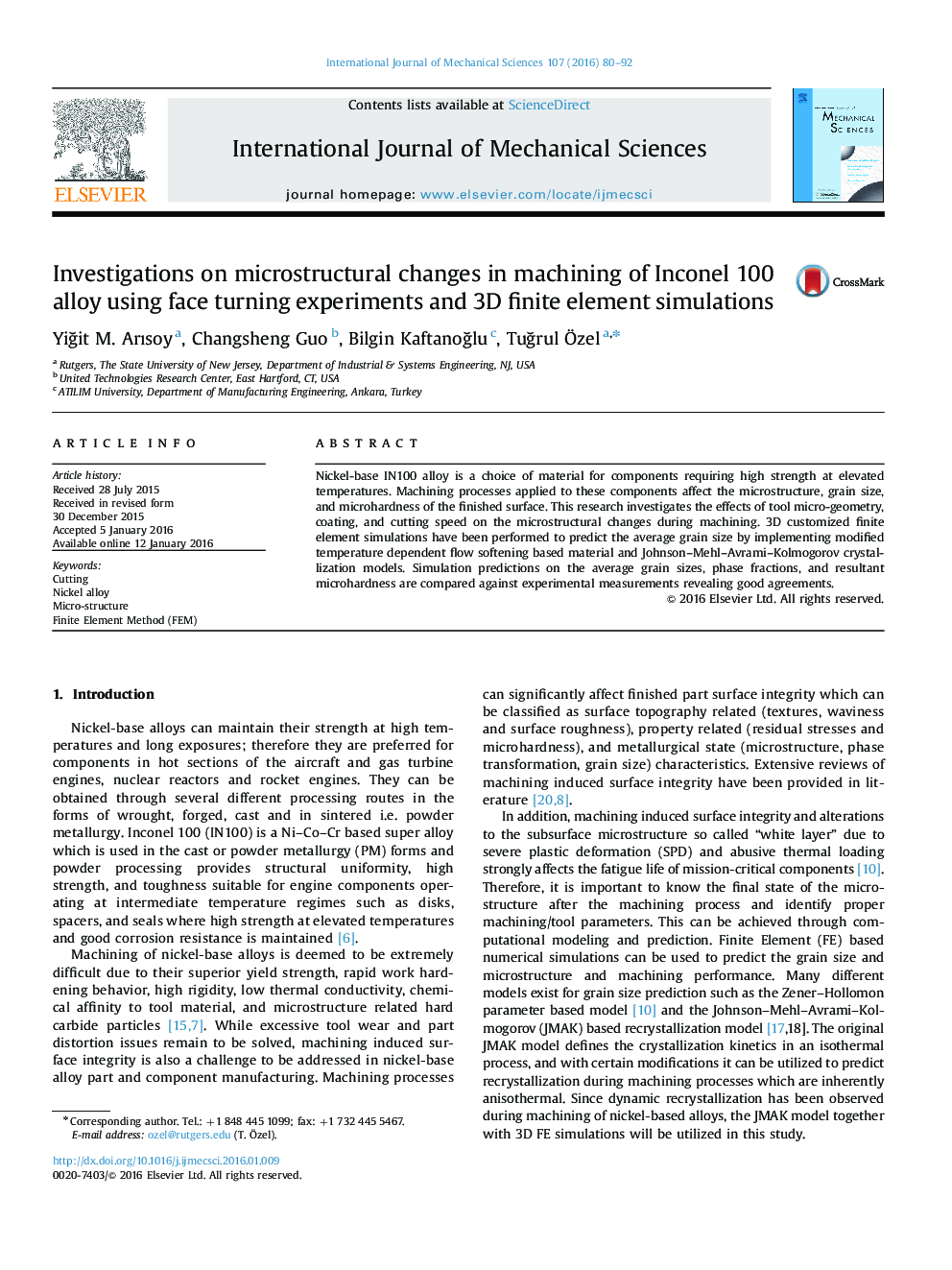| Article ID | Journal | Published Year | Pages | File Type |
|---|---|---|---|---|
| 782114 | International Journal of Mechanical Sciences | 2016 | 13 Pages |
•Presented investigations on machining induced microstructural changes in IN100 alloy material.•Microhardness below the machined surface indicates the high hardness layer is about 25 µm thick.•Measured grain size and volume fraction of γ′ phase provide insight for machining process effects.•3D FE simulations for microstructure with Johnson-Mehl-Avrami-Kolmogorov model are presented.•The effect of tool edge radius and coating in machining of IN100 alloy is found significant.
Nickel-base IN100 alloy is a choice of material for components requiring high strength at elevated temperatures. Machining processes applied to these components affect the microstructure, grain size, and microhardness of the finished surface. This research investigates the effects of tool micro-geometry, coating, and cutting speed on the microstructural changes during machining. 3D customized finite element simulations have been performed to predict the average grain size by implementing modified temperature dependent flow softening based material and Johnson–Mehl–Avrami–Kolmogorov crystallization models. Simulation predictions on the average grain sizes, phase fractions, and resultant microhardness are compared against experimental measurements revealing good agreements.
